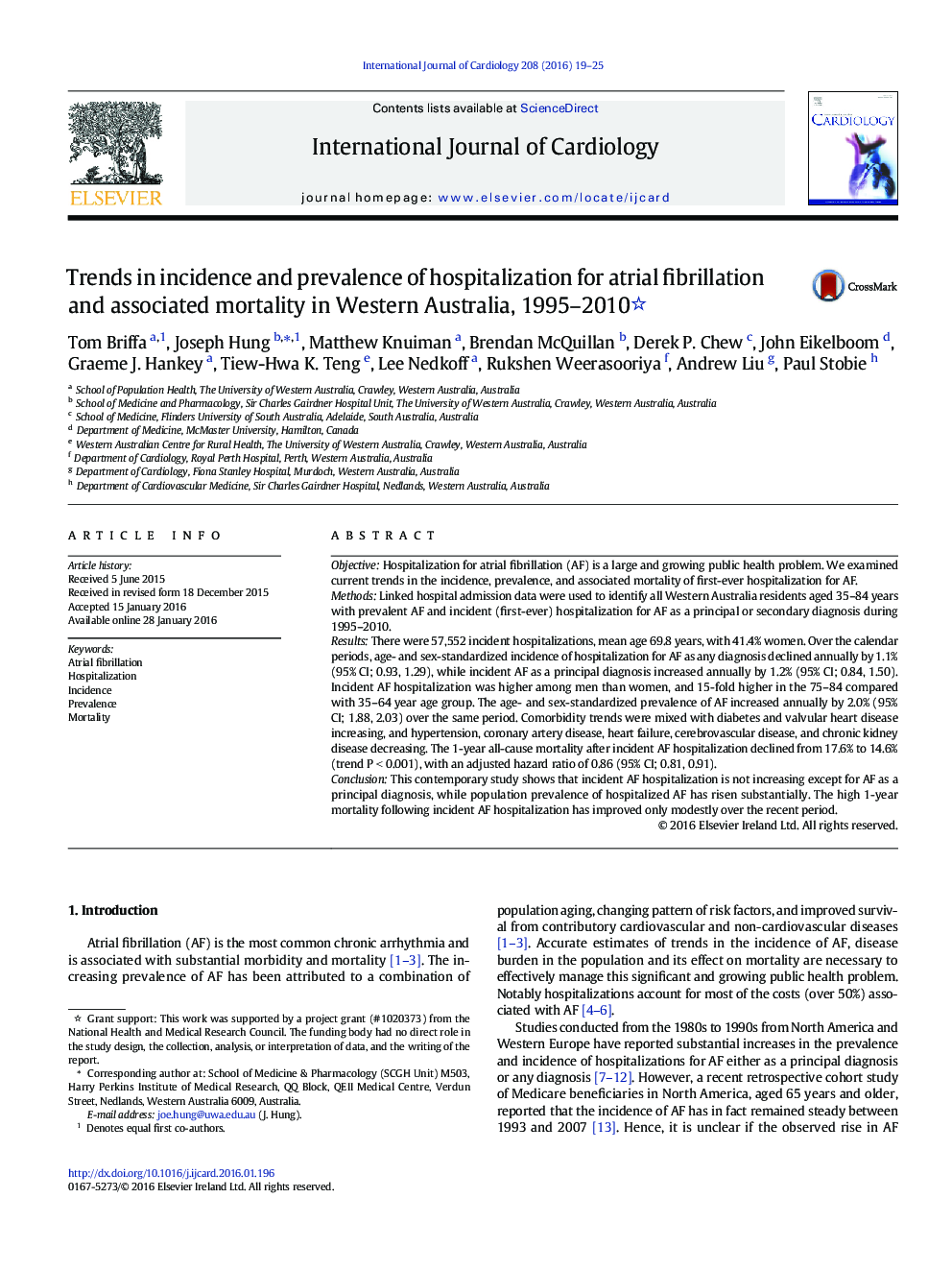| Article ID | Journal | Published Year | Pages | File Type |
|---|---|---|---|---|
| 2928635 | International Journal of Cardiology | 2016 | 7 Pages |
ObjectiveHospitalization for atrial fibrillation (AF) is a large and growing public health problem. We examined current trends in the incidence, prevalence, and associated mortality of first-ever hospitalization for AF.MethodsLinked hospital admission data were used to identify all Western Australia residents aged 35–84 years with prevalent AF and incident (first-ever) hospitalization for AF as a principal or secondary diagnosis during 1995–2010.ResultsThere were 57,552 incident hospitalizations, mean age 69.8 years, with 41.4% women. Over the calendar periods, age- and sex-standardized incidence of hospitalization for AF as any diagnosis declined annually by 1.1% (95% CI; 0.93, 1.29), while incident AF as a principal diagnosis increased annually by 1.2% (95% CI; 0.84, 1.50). Incident AF hospitalization was higher among men than women, and 15-fold higher in the 75–84 compared with 35–64 year age group. The age- and sex-standardized prevalence of AF increased annually by 2.0% (95% CI; 1.88, 2.03) over the same period. Comorbidity trends were mixed with diabetes and valvular heart disease increasing, and hypertension, coronary artery disease, heart failure, cerebrovascular disease, and chronic kidney disease decreasing. The 1-year all-cause mortality after incident AF hospitalization declined from 17.6% to 14.6% (trend P < 0.001), with an adjusted hazard ratio of 0.86 (95% CI; 0.81, 0.91).ConclusionThis contemporary study shows that incident AF hospitalization is not increasing except for AF as a principal diagnosis, while population prevalence of hospitalized AF has risen substantially. The high 1-year mortality following incident AF hospitalization has improved only modestly over the recent period.
